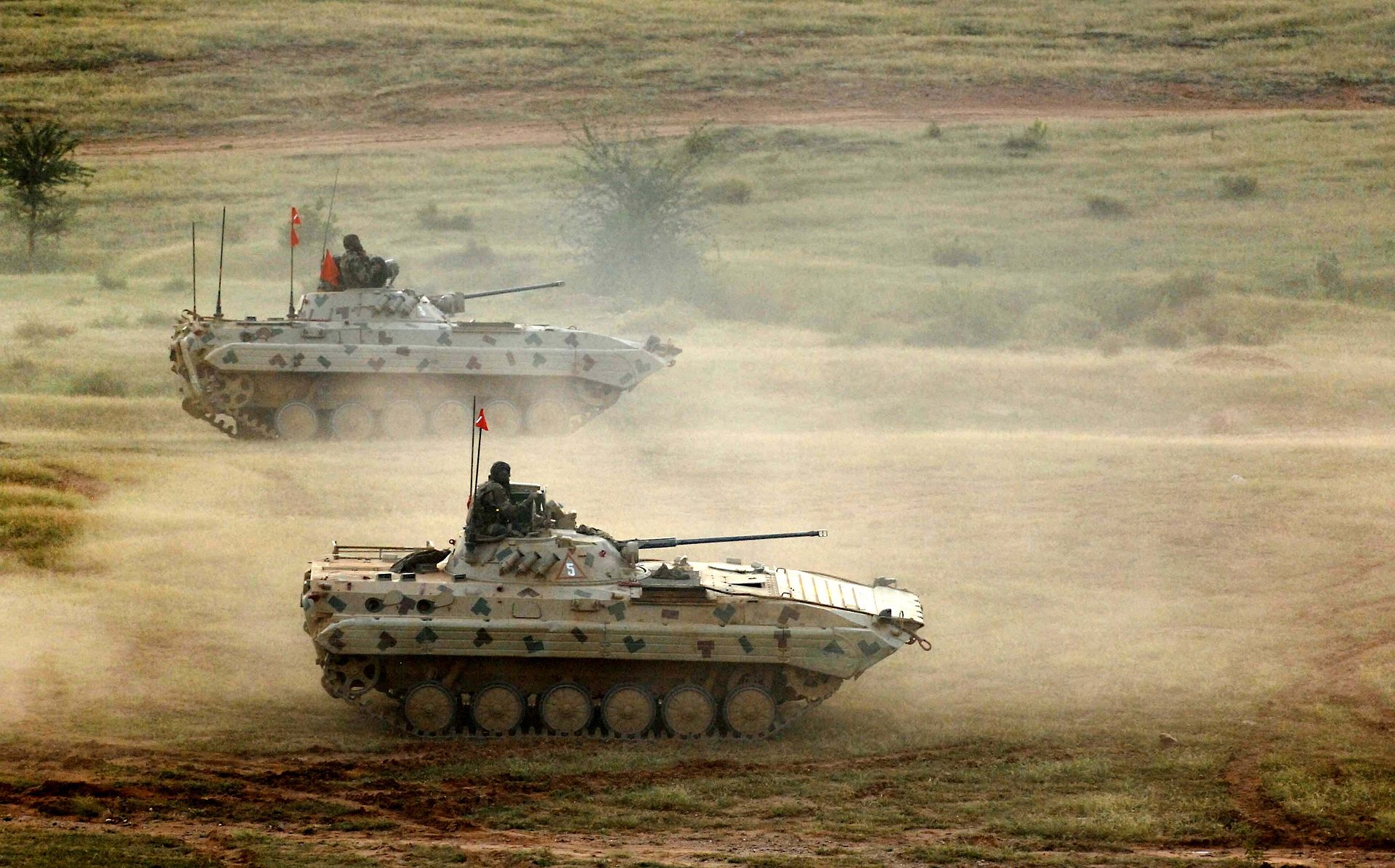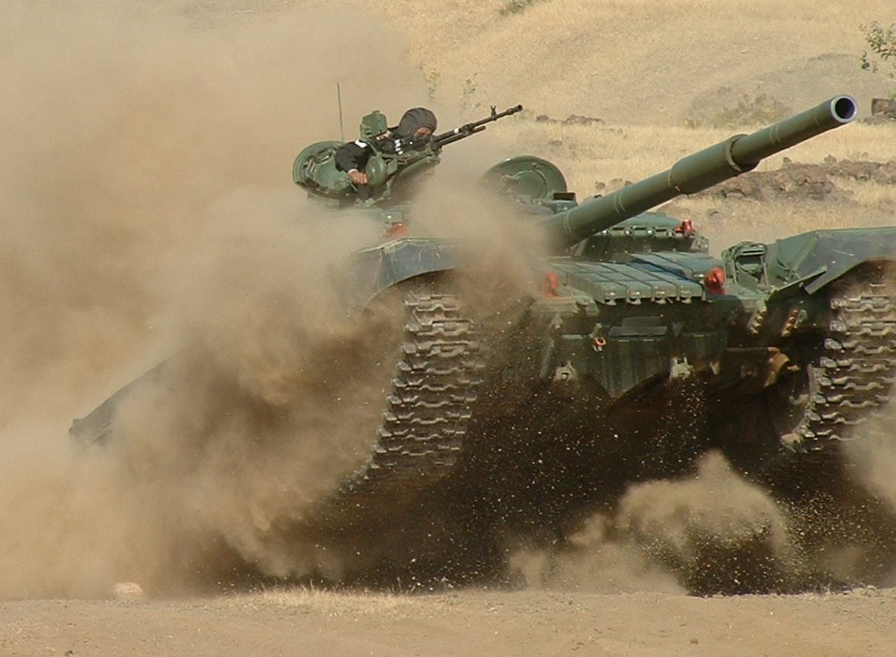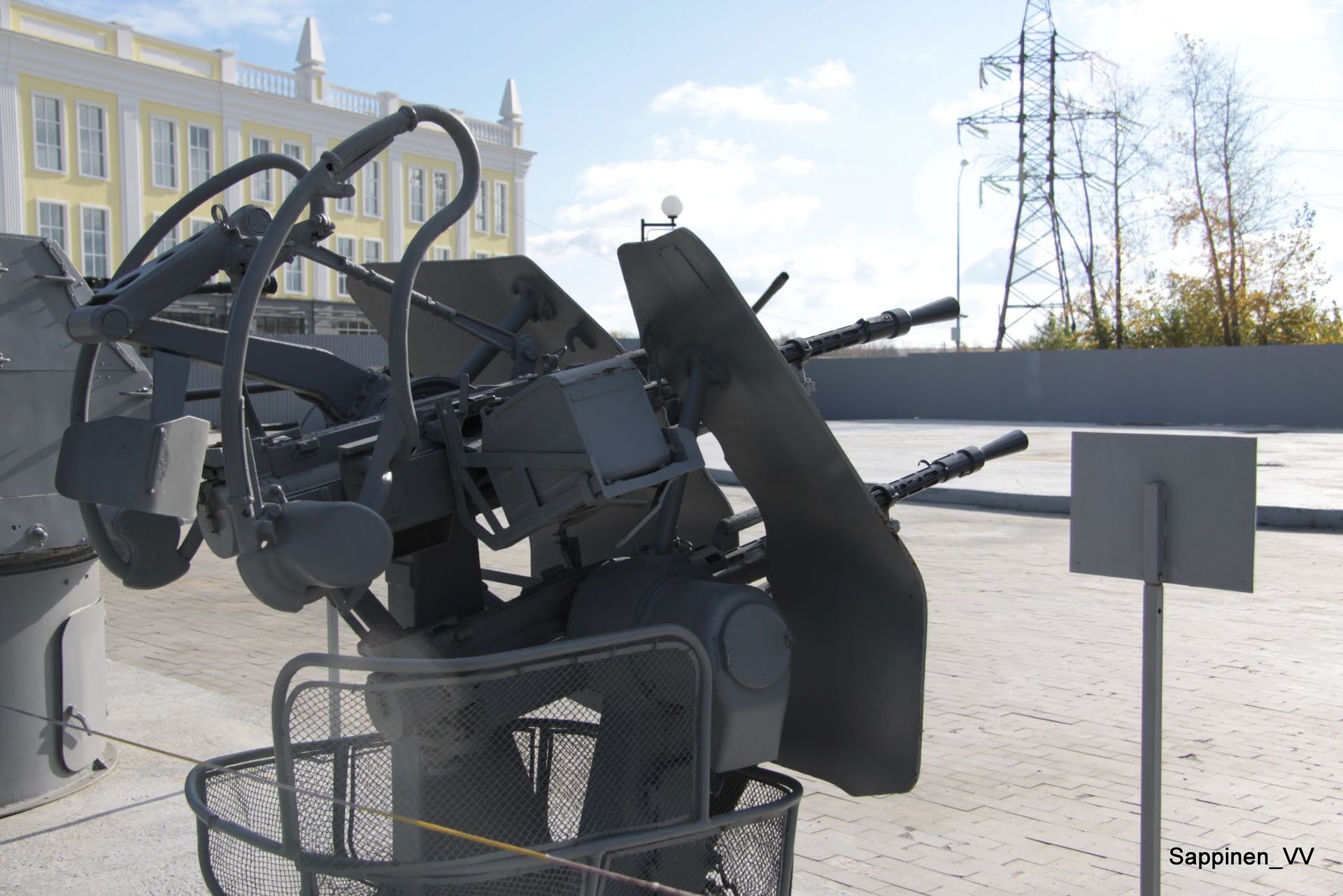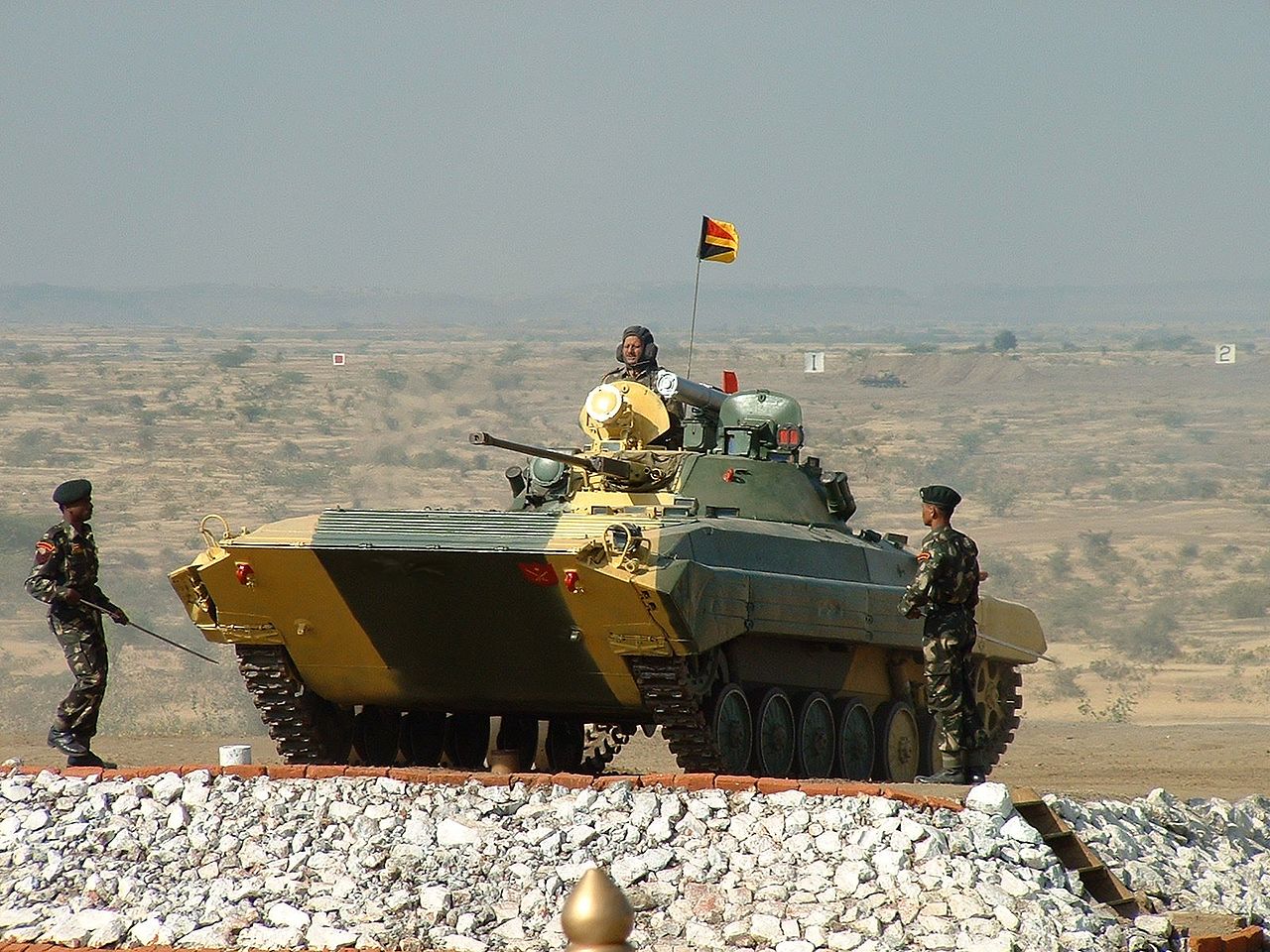
Indian Army's upgraded BMP-2 Sarath during military exercise in Rajasthan, India.
Press PhotoIndia’s resurgent defence industry manufactures a bunch of high profile weapons platforms under licence from Russia. These include the Sukhoi-30 MKI air dominance fighter, the T-90 “Flying Tank” and stealthy Krivak III (Talwar) class frigates. These high-profile weapons provide the Indian armed forces a decisive edge.
At the same time, there are several Russian weapons that are critical elements of India’s war fighting strategy. Some of these platforms have been produced in the thousands but rarely merit a mention.
The PK (Pulemyot Kalashnikova or "Kalashnikov's Machinegun") is a 7.62 mm light vehicle-mounted machine gun used by India’s frontline infantry. As well as a general purpose machine gun, the PK is used as a co-axial weapon on India’s Russian origin platforms like the T-90 and T-72 tanks and BMP-2 infantry fighting vehicles. First developed in Russia in 1961, the high-powered rifle has a maximum range of 1000 metres and can also be used as a light anti-aircraft weapon. Manufactured at the Ordnance Factory in Tiruchirapalli, it is sometimes used by India’s Special Forces.
 PK machine gun. Source: Habiermalik/wikipedia
PK machine gun. Source: Habiermalik/wikipedia
Named after armaments designers G.I. Nikitin, Y.S. Sokolov and V.I. Volkov, the NSV is a formidable weapon in India’s arsenal. Manufactured at Ordnance Factory Tiruchirapalli, the 12.7 mm calibre machine gun was first adopted by Russia in 1971. Due to its high rate of fire; 700-800 rounds per minute; the NSV is intended to be used as a close-range anti-aircraft weapon against helicopters, UAVs and aircraft. In dismounted ground combat it is placed on a special mount. Its range extends to 1500 metres against airborne targets and up to 2000 m against targets on the ground.
After the break-up of the Soviet Union, the NSV’s manufacturing licence passed to Kazakhstan and Ukraine. In India the gun is manufactured at Ordnance Factory Tiruchirappalli, but the Indian Army is now looking for a replacement with a range exceeding 2000 metres. One reason for wanting an upgrade could be difficulties in dealing with Ukraine. India has sent feelers to agencies, including Russia’s Rosoboronexport for the Degtyarev Kord machine gun with a 12.7 mm calibre. However, considering India’s drawn out procurement processes, it is unlike replacements will arrive any time soon.
 NSV machine gun on Indian T-72 tank. Source: cell105/flickr.com
NSV machine gun on Indian T-72 tank. Source: cell105/flickr.com
The KPV is a long range, high powered rifle mounted on India’s tanks and infantry fighting vehicles. Developed in Russia in the 1960s, the 14.5×114 mm calibre gun is mass produced at Ordnance Factory Tiruchirapalli.
For sheer size and power, the KPV is unmatched in its class. The distance at which its bullet retains lethal force is 8 km and the maximum flight range of the bullets is 9 km. This makes it a useful weapon for fighting against light armoured targets, weapons systems and light shelters at distances of up to 3000 metres, as well as aerial targets up to 2000 metres.
In Russia the weapon was so well-regarded that it was not only adopted by the land forces, but on the orders of the Strategic Missile Forces, the KPV machine gun is deployed to protect stationary and mobile missile complexes.
The rifle uses armour-piercing incendiary bullets and the anti-aircraft variant uses armour-piercing incendiary tracer bullets. In 2002, an important innovation was the ignition of the tracer at a distance from the muzzle, which is less blinding and reduces flare.
This is one Russian weapon that will serve in India's armed forces for a long time.
 KPV heavy machine gun. Source: Vladimir Sappinen/wikipedia
KPV heavy machine gun. Source: Vladimir Sappinen/wikipedia
The Russian BMP-2 is one of the most popular infantry fighting vehicles in the world. Typical of Russian weapons, it is a robust and fully amphibious troop transporter armed with a powerful 30 mm cannon.
The Indian Army is the second largest user of the BMP-2 outside Russia. The licence-produced variant known as ‘Sarath’ is built by the Ordnance Factory in Medak. The first vehicle, assembled from components supplied by Russia, rolled off the assembly line in 1987. In a heart-warming case of successful indigenisation, about 90 per cent of the vehicle was sourced from India by 1999. As many as 1500 ‘Saraths’ have been built so far.

India’s Defence Research & Development Organisation has used the BMP’s hull and chassis to develop a wide range of carriers, including a light tank, command vehicle, armoured ambulance, Armoured Vehicle Tracked Light Repair (recovery vehicle fitted with a light hydraulic crane), Armoured Amphibious Dozer (turret-less combat engineer vehicle), Armoured Engineer Reconnaissance Vehicle, NBC Reconnaissance Vehicle (for detection of nuclear, biological and chemical contamination), Carrier Mortar Tracked Vehicle and NAMICA (Nag Missile Carrier).
The BMP-2 fleet’s armament and firepower capability are being upgraded with the latest generation fire control system, twin missile launchers and commander's thermal imaging panoramic sights. The vehicles will also be equipped with the latest generation anti tank guided missiles and automatic grenade launchers.
Expect these warhorses to stick around for a couple of more decades at the very least.
 Indian BMP-2. Source: cell105/flickr.com
Indian BMP-2. Source: cell105/flickr.com
The M-46 is a manually loaded, towed 130 mm howitzer manufactured in Russia in the 1950s. For many years, it was one of the longest range artillery systems in the world, with a range of more than 27 km. According to Global Security, "During the Indo-Pakistan wars India had a large number of M-46 130mm field guns that they wished to be more mobile, and a number of Vijayanta tanks that they wished to retire from service. Rather than buy more self-propelled guns from an outside source and junking the Vijayantas, they combined 100 of these weapons into self-propelled howitzers."
The new self-propelled gun was named the ‘Catapult MK-I’, which was later upgraded to the ‘Arjun Catapult MK-II’ with the replacement of the old chassis by the Arjun tank chassis.
Curiously, after 100 of the Arjun Catapults were produced, the army did not ask for further enhancements to the system. Because of the army’s about turn, the DRDO team working on the gun lost development continuity.
Besides meeting the army’s interim needs, there was another important gain from the project. Private defence contractors like Tata, L&T and Bharat Forge were involved in locally upgrading the Russian guns to 155 mm, which increased the range from 26 km to 39 km. The experience gained from the upgrade will come in handy when L&T, for instance, co-produces (with South Korea’s Samsung) the next generation of howitzers for the Indian Army.
 M-46 howitzer. Source: Gopal Aggarwal/gopal1035.blogspot.com
M-46 howitzer. Source: Gopal Aggarwal/gopal1035.blogspot.com
All rights reserved by Rossiyskaya Gazeta.
Subscribe
to our newsletter!
Get the week's best stories straight to your inbox